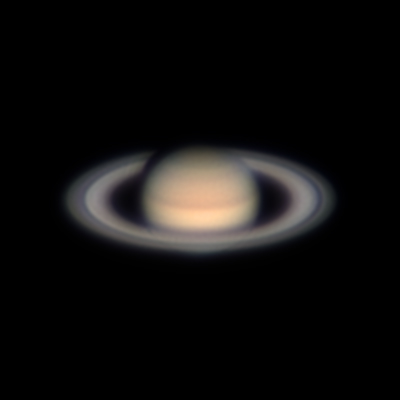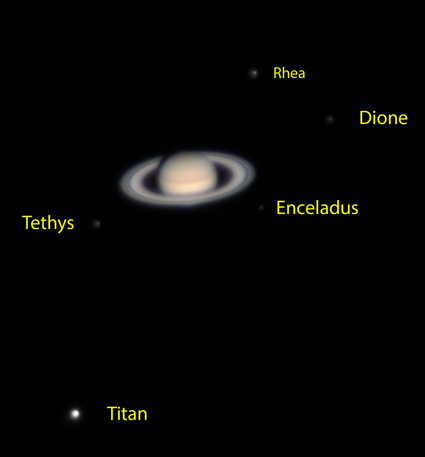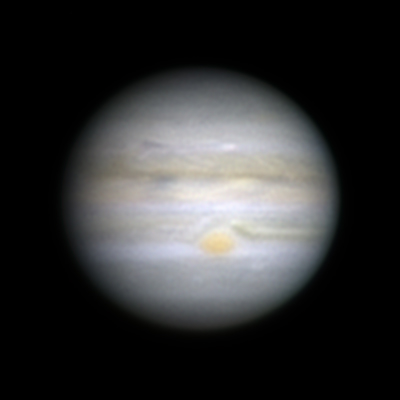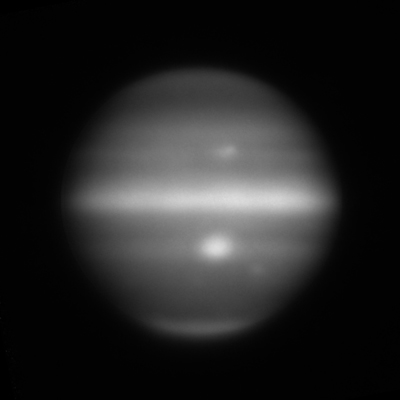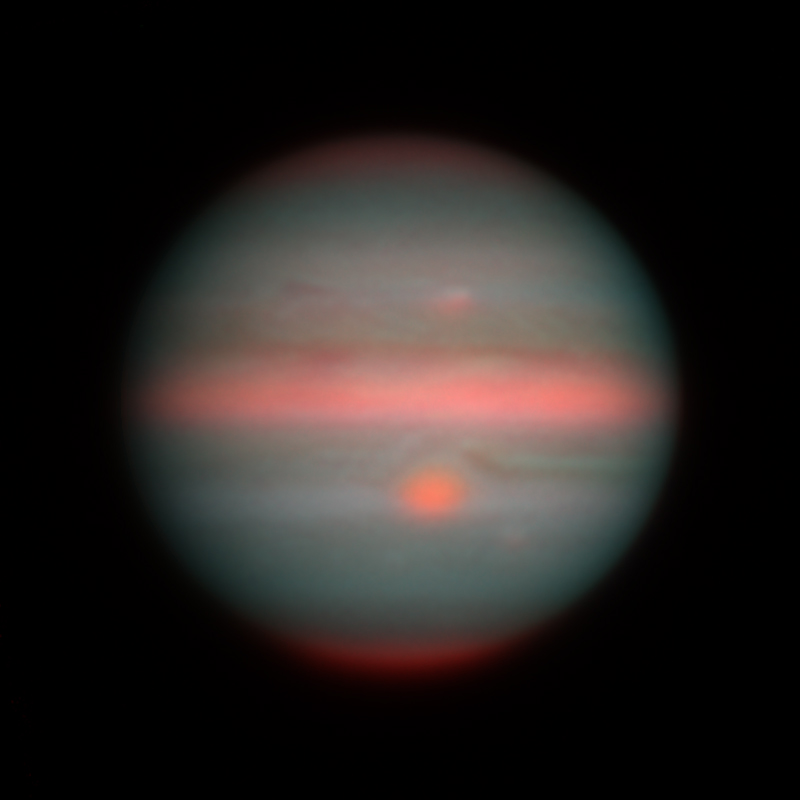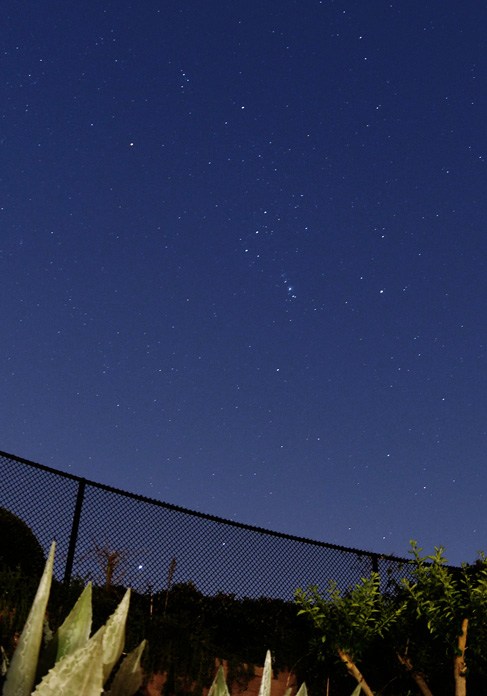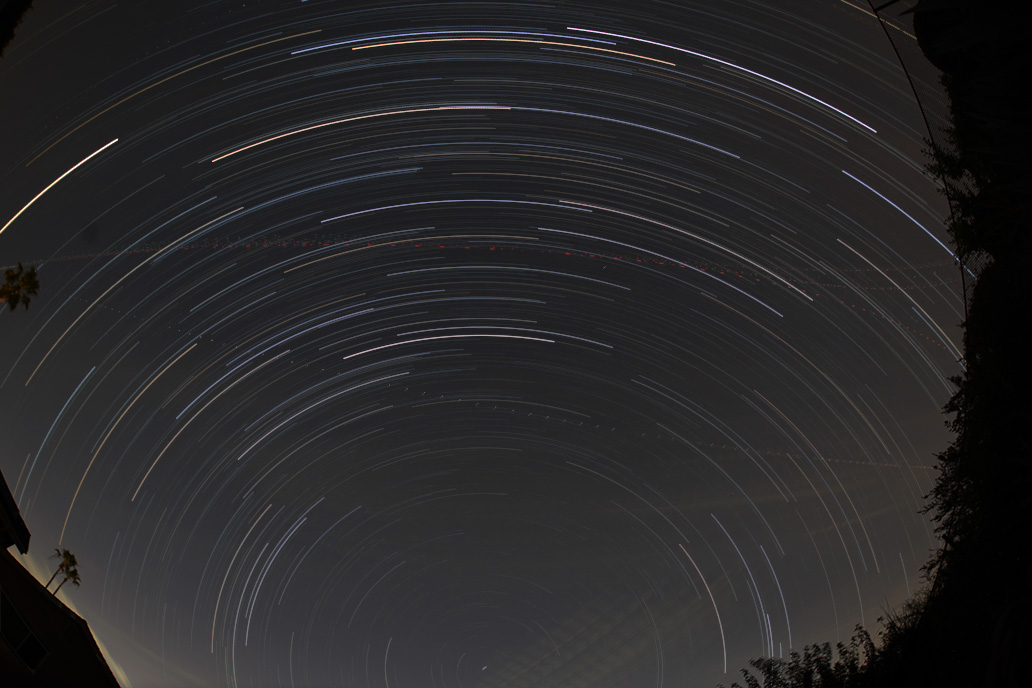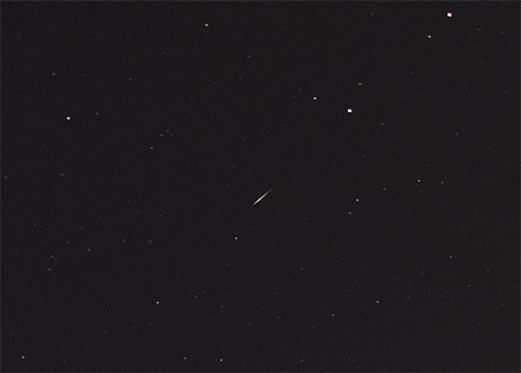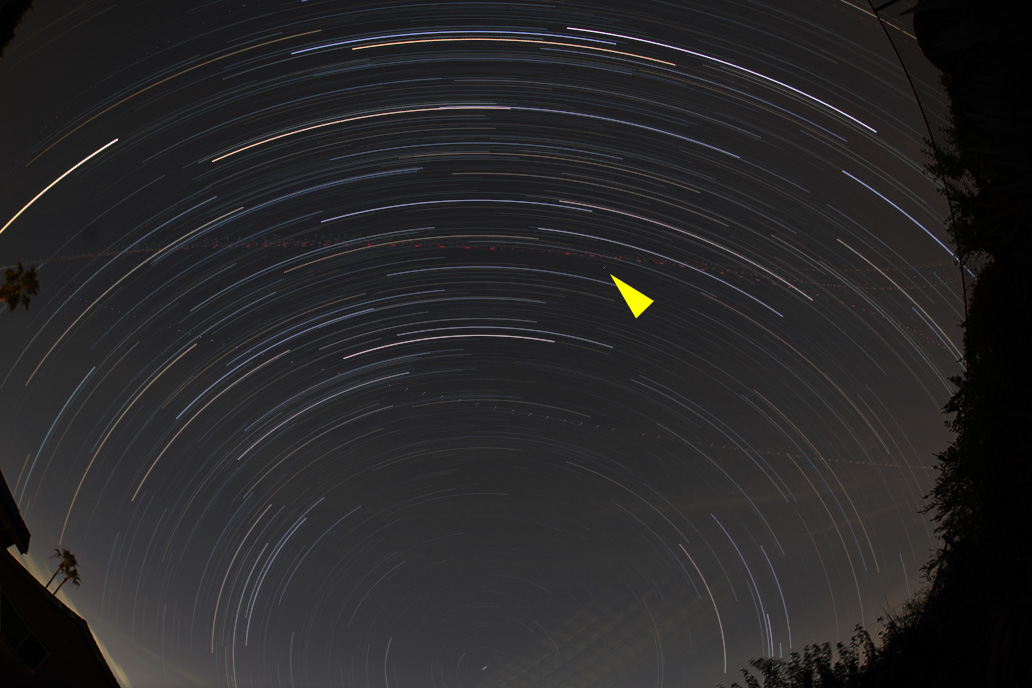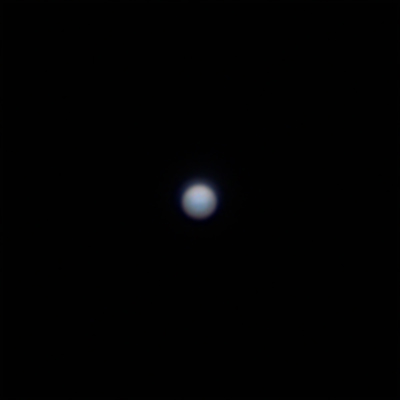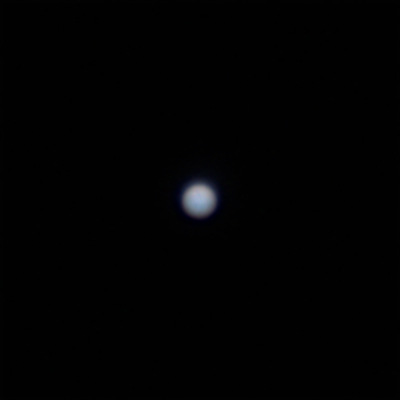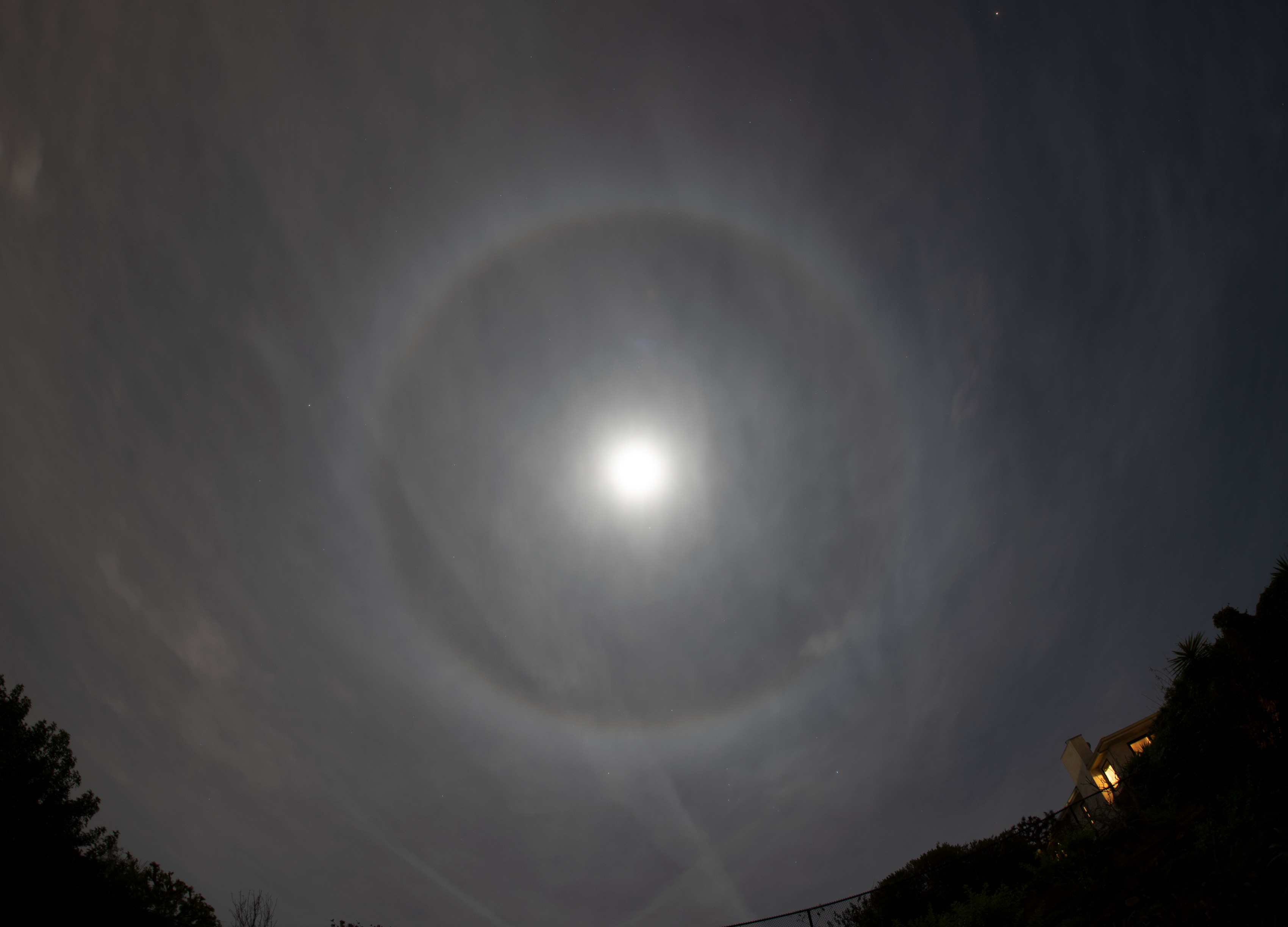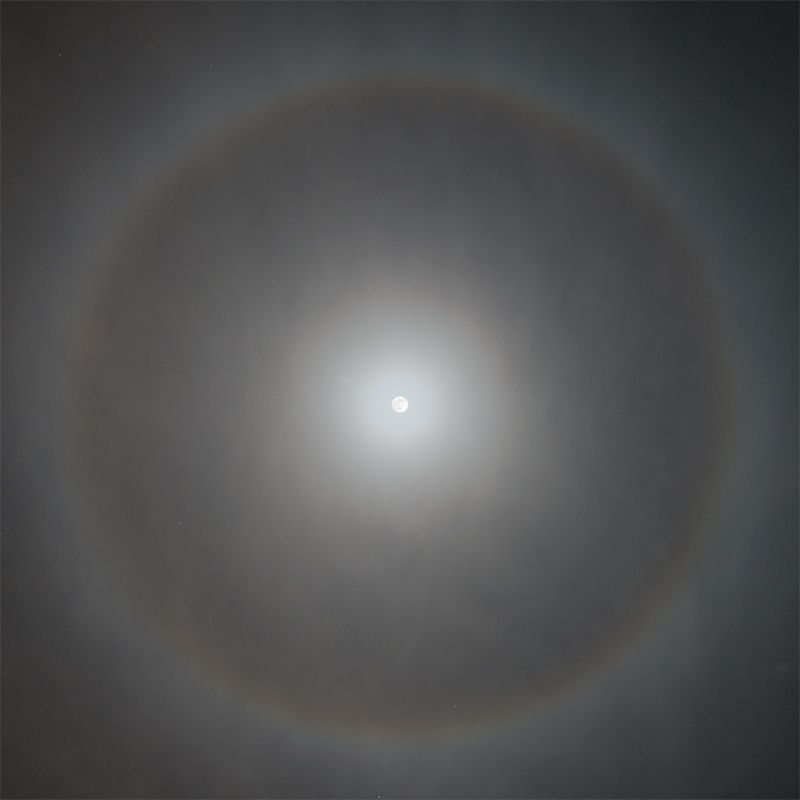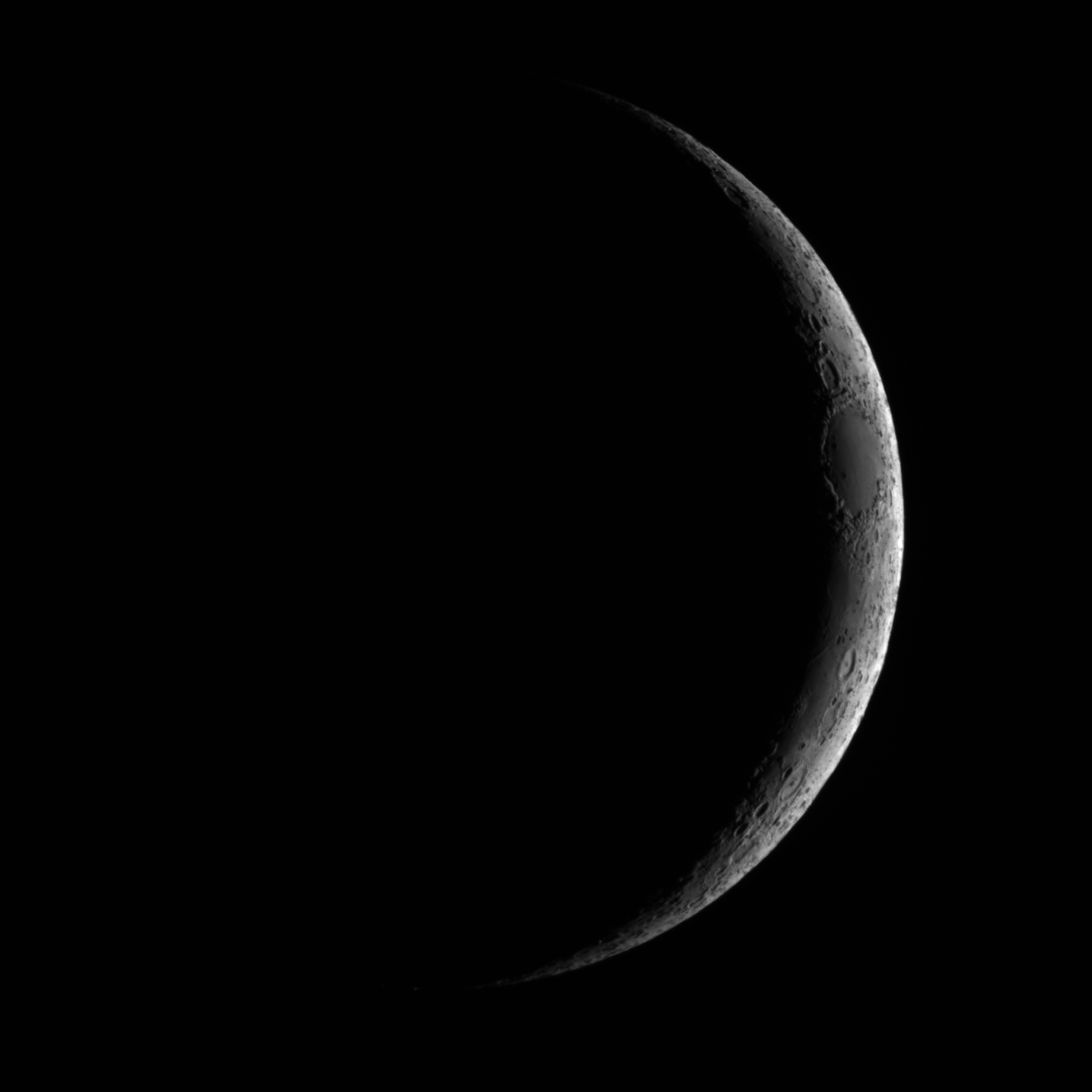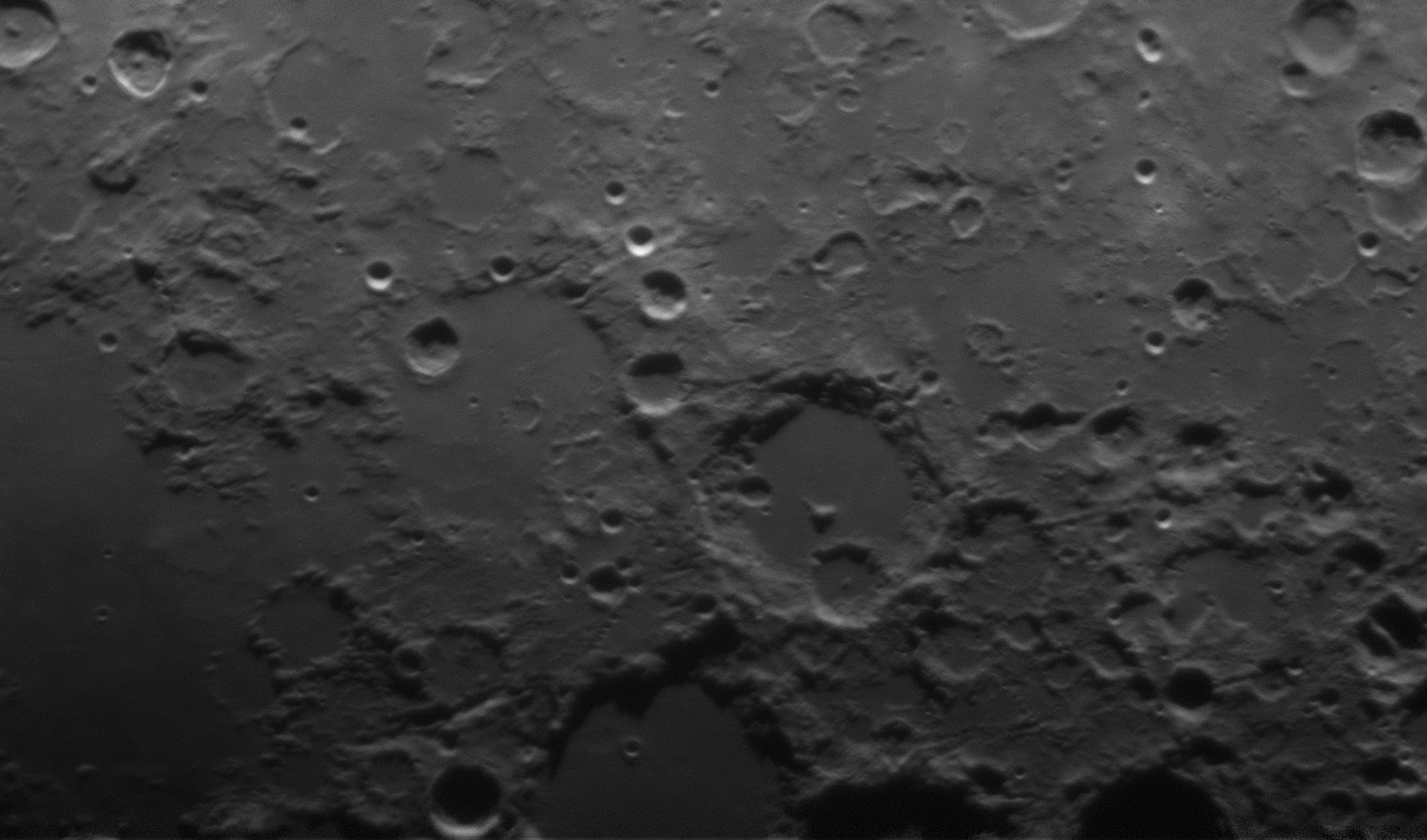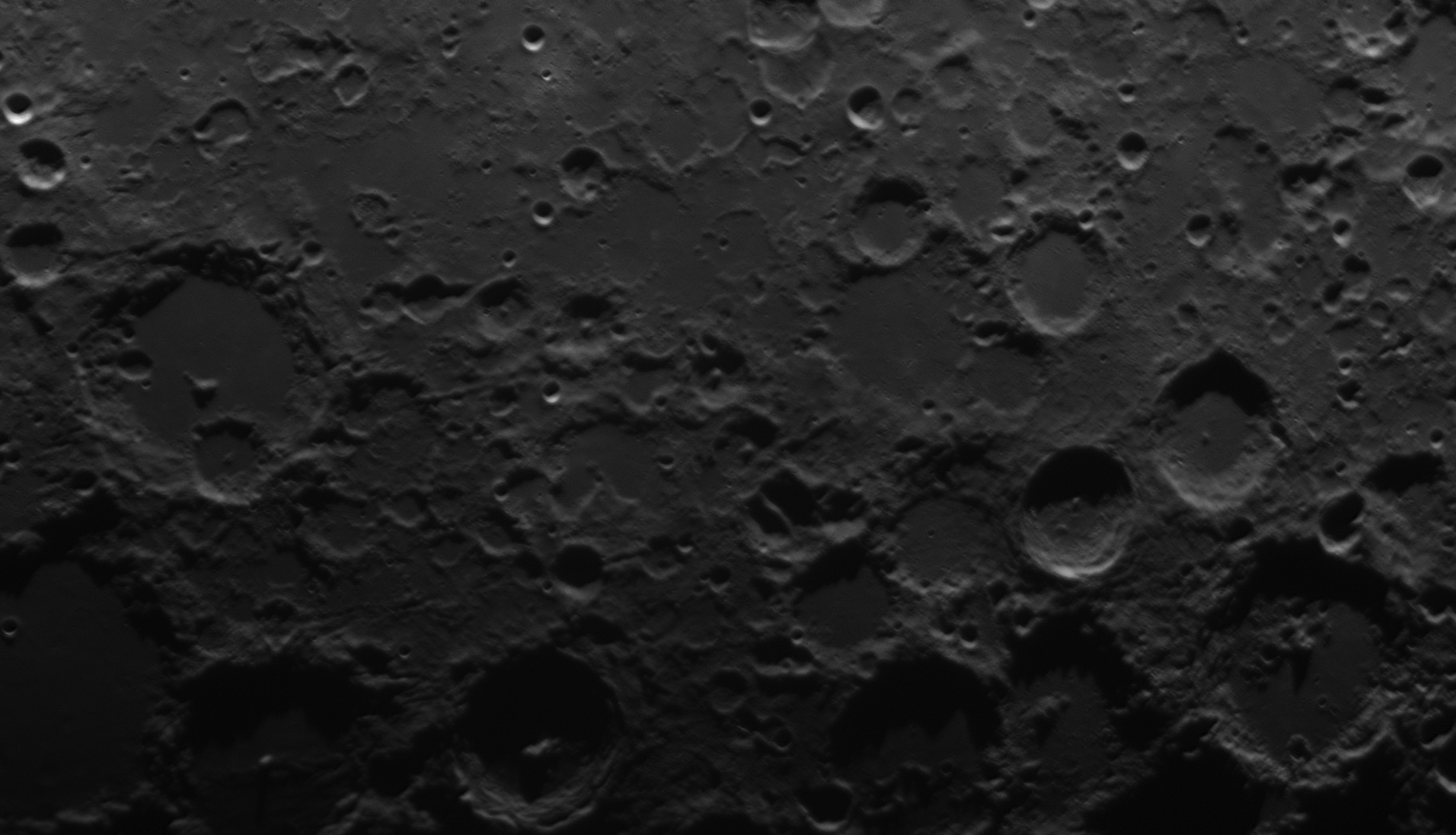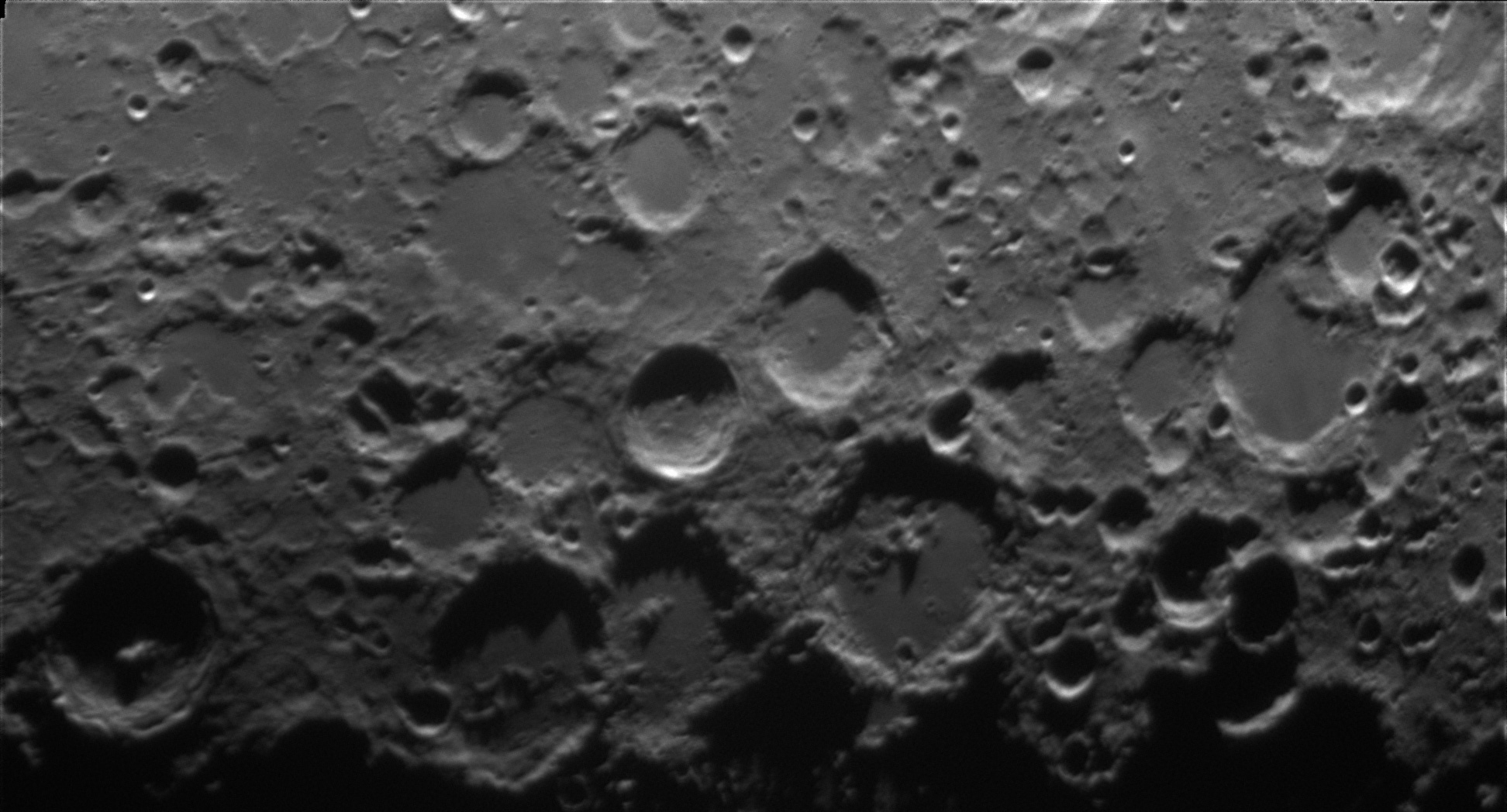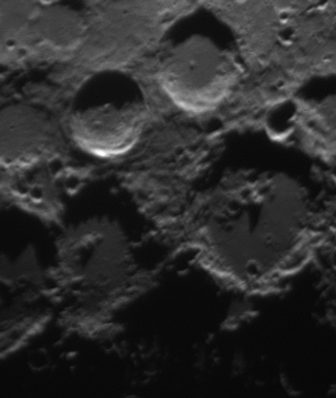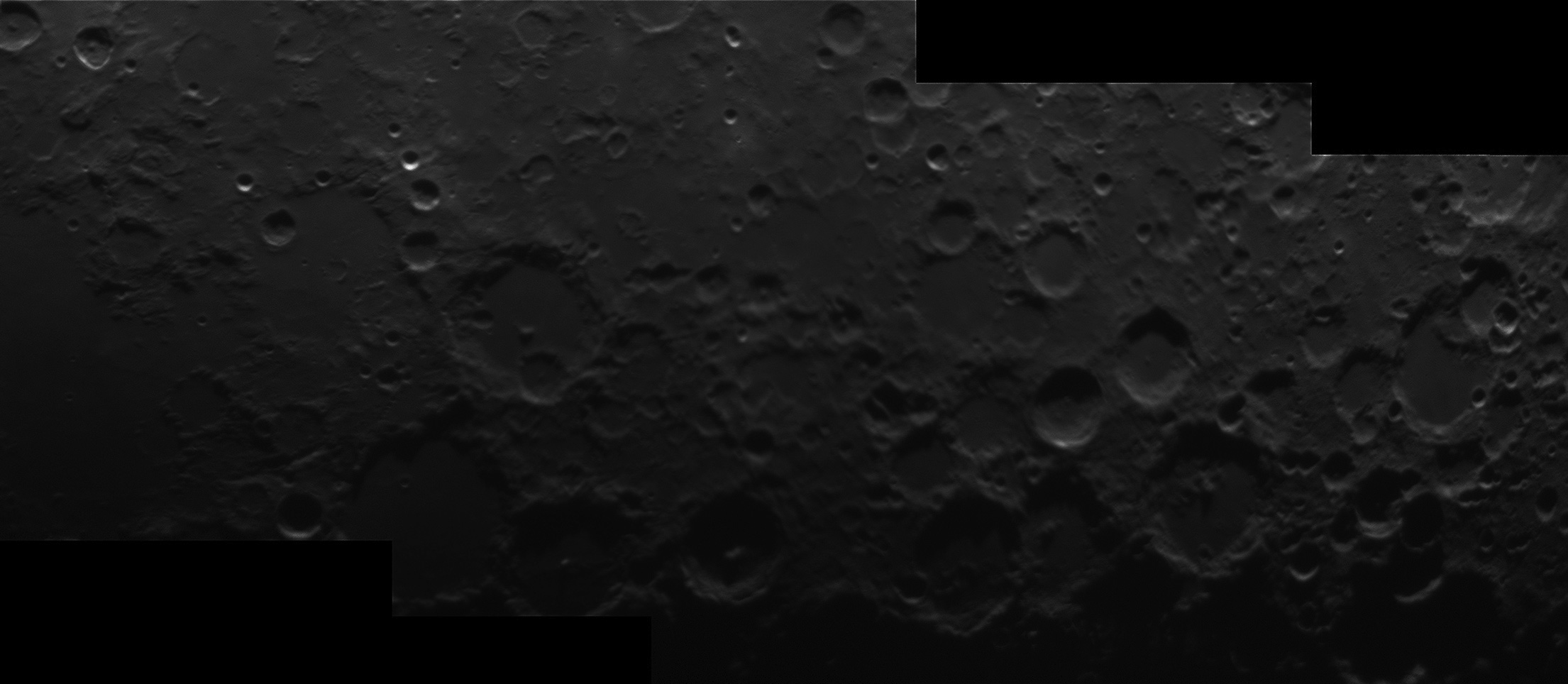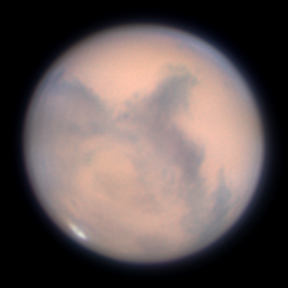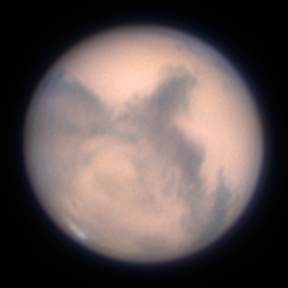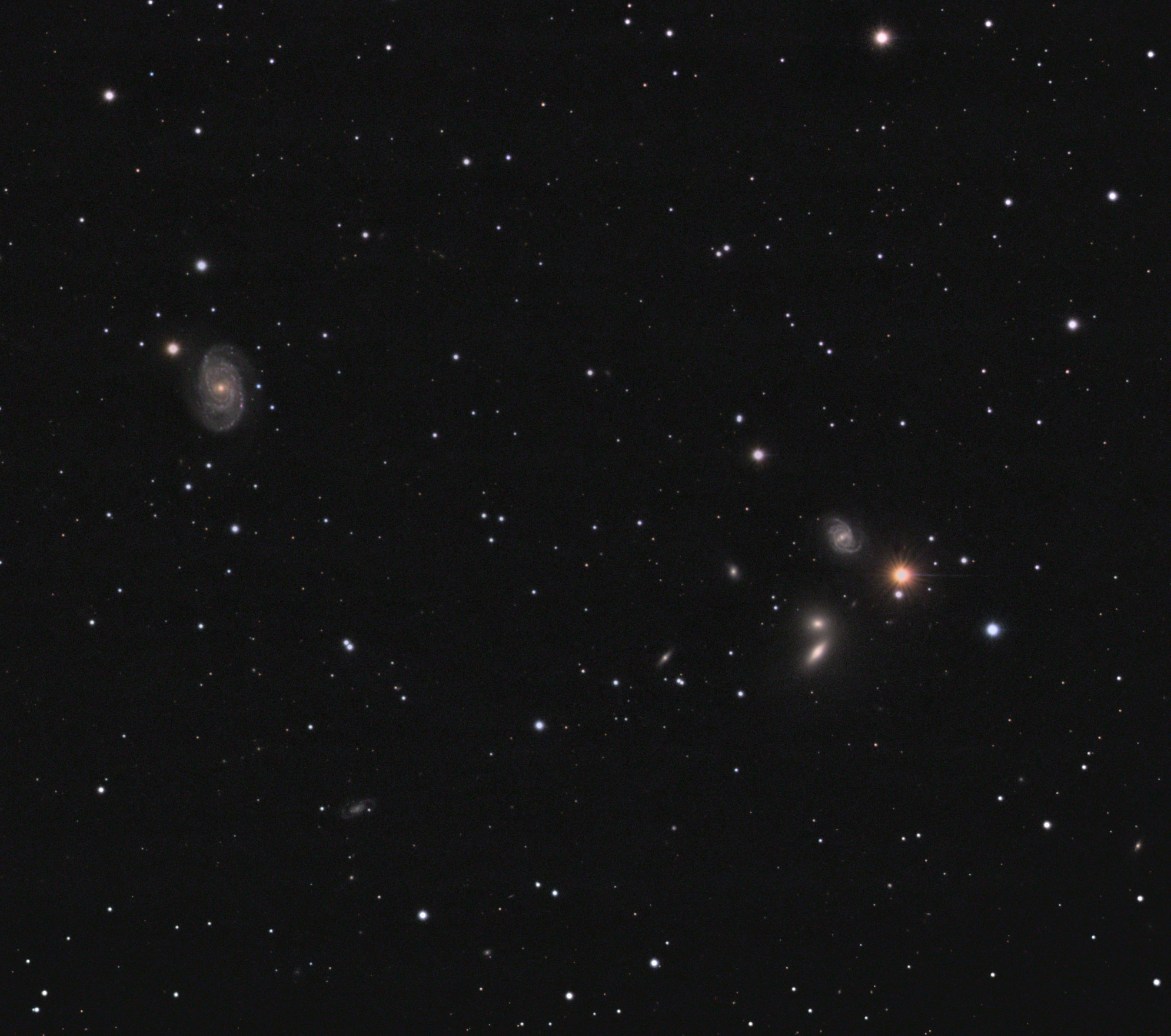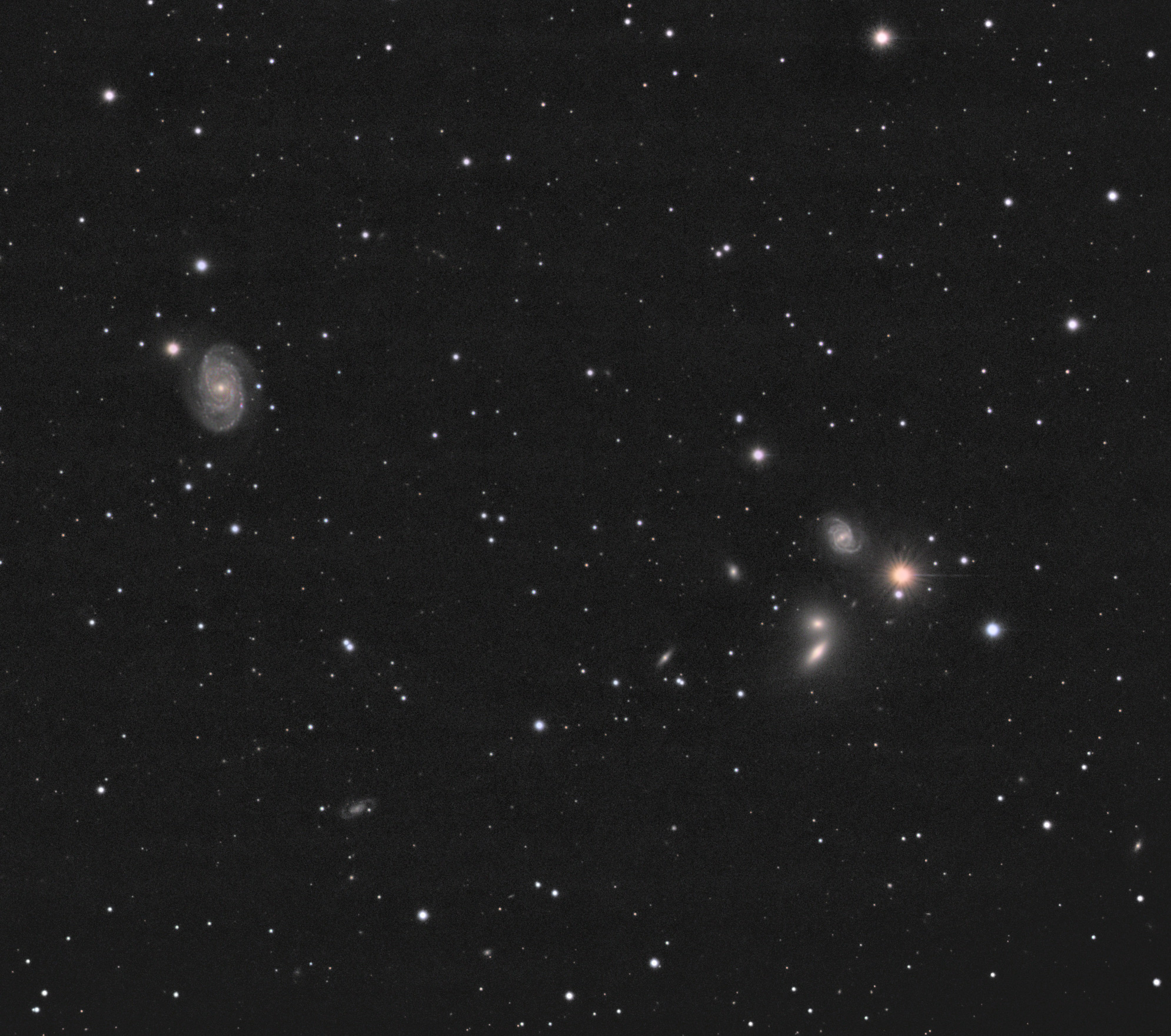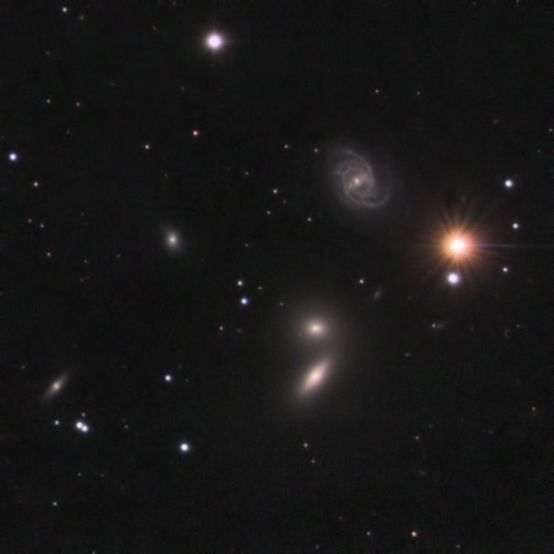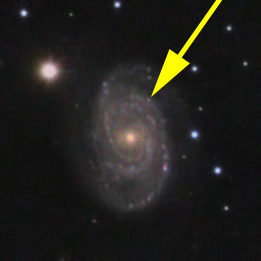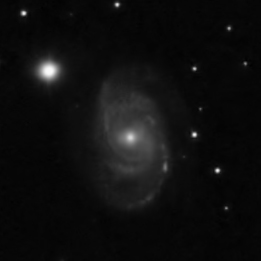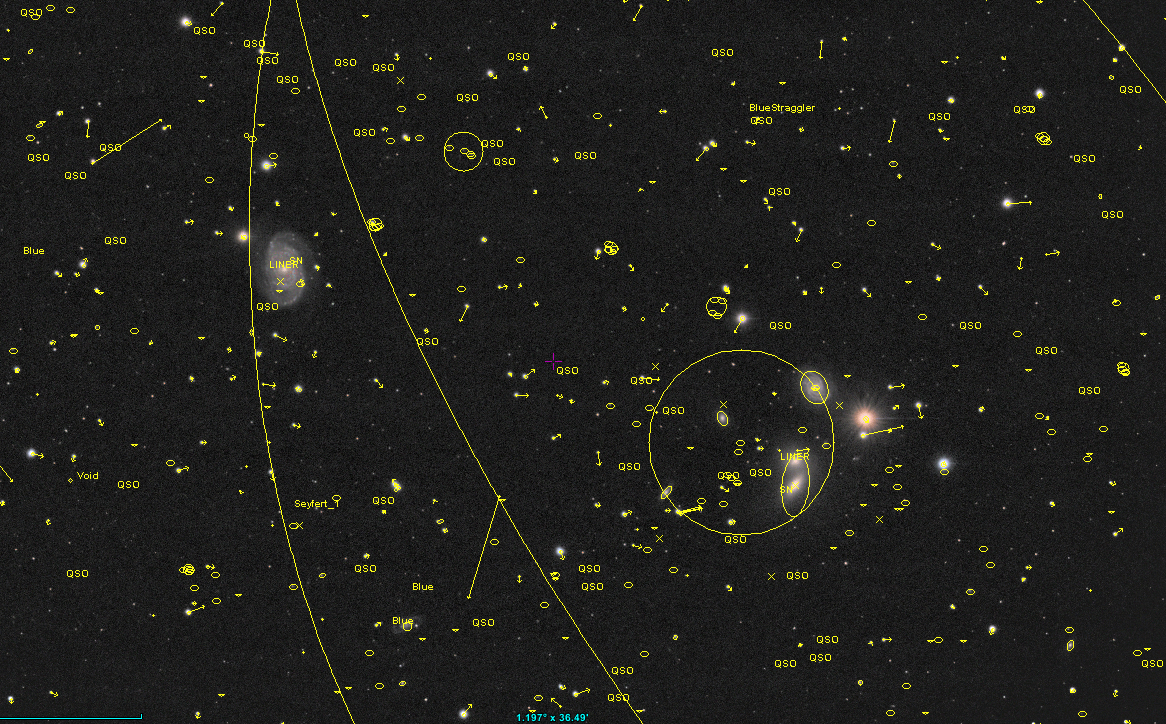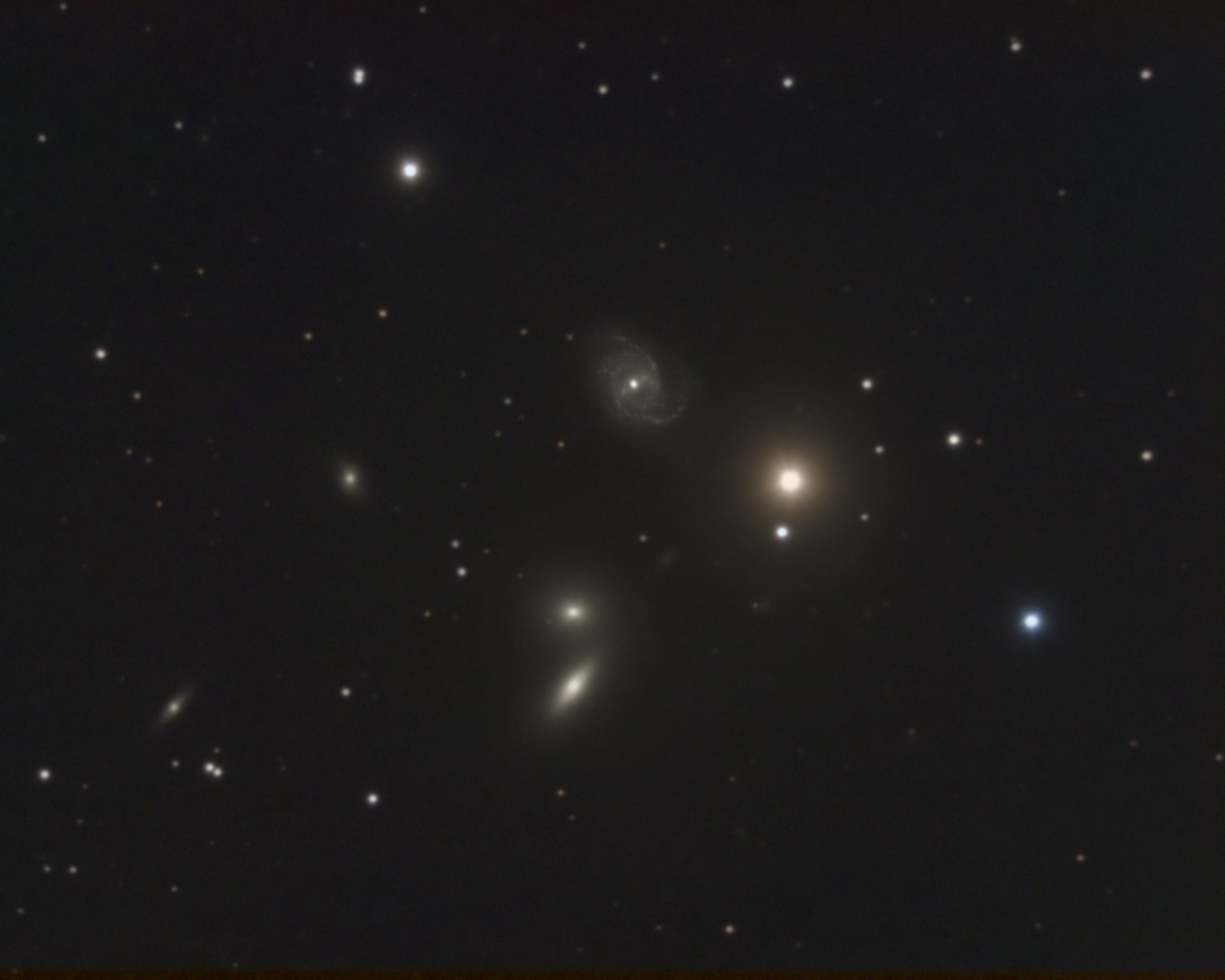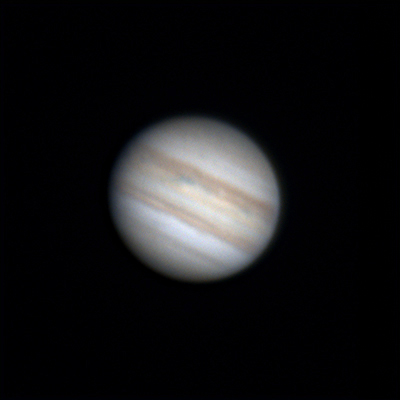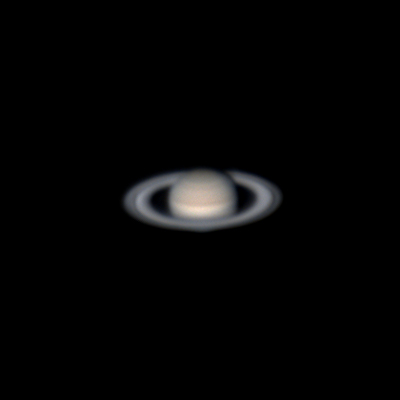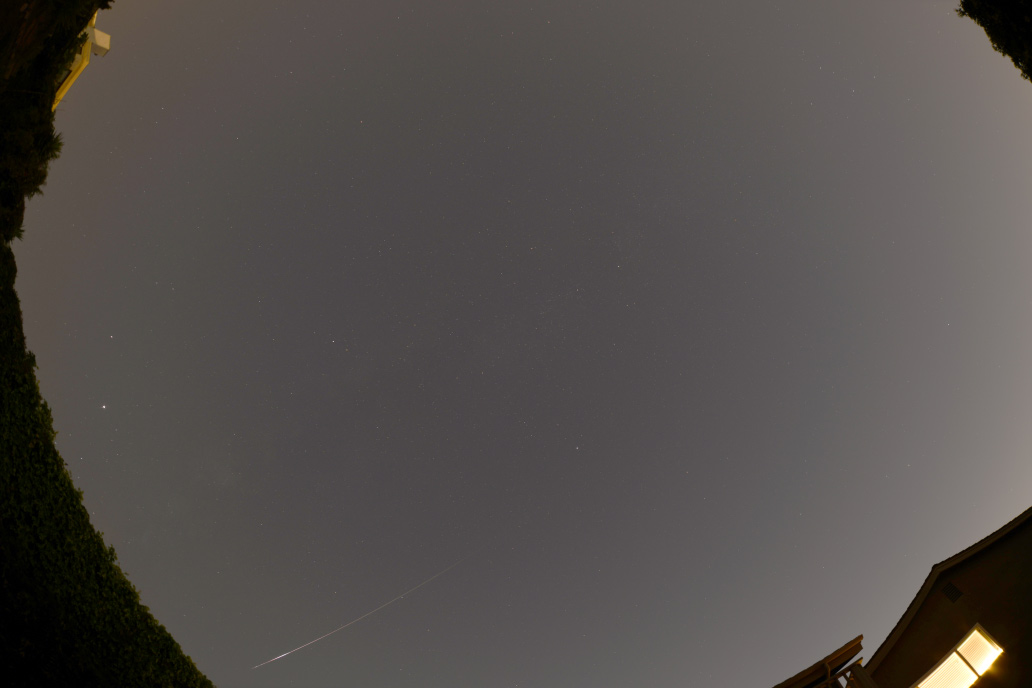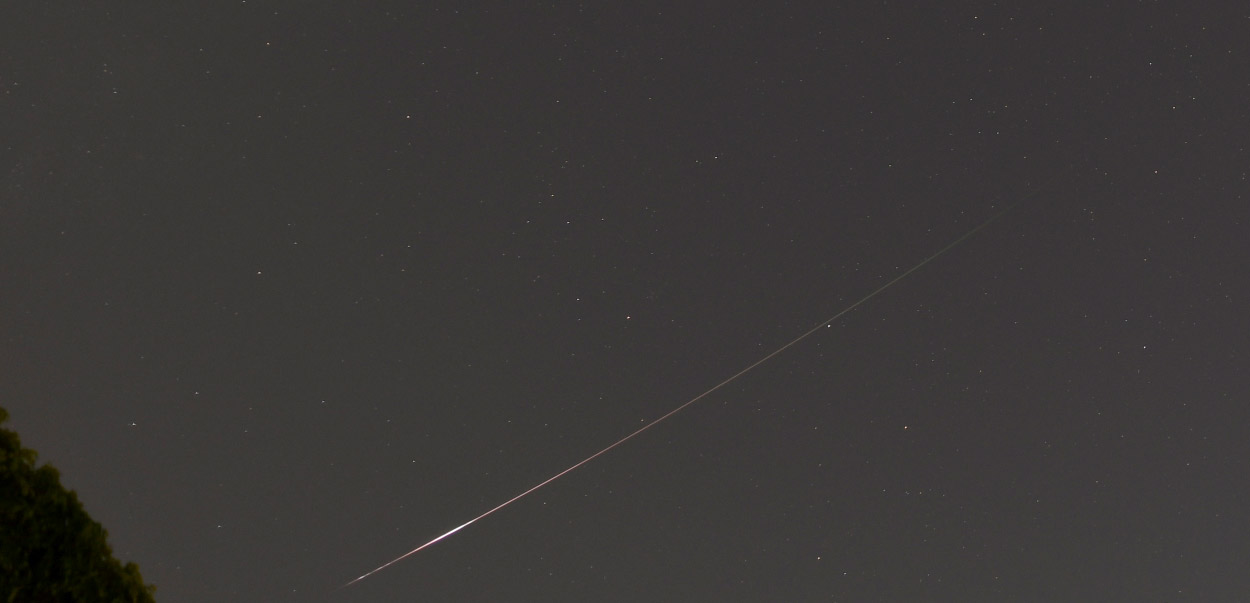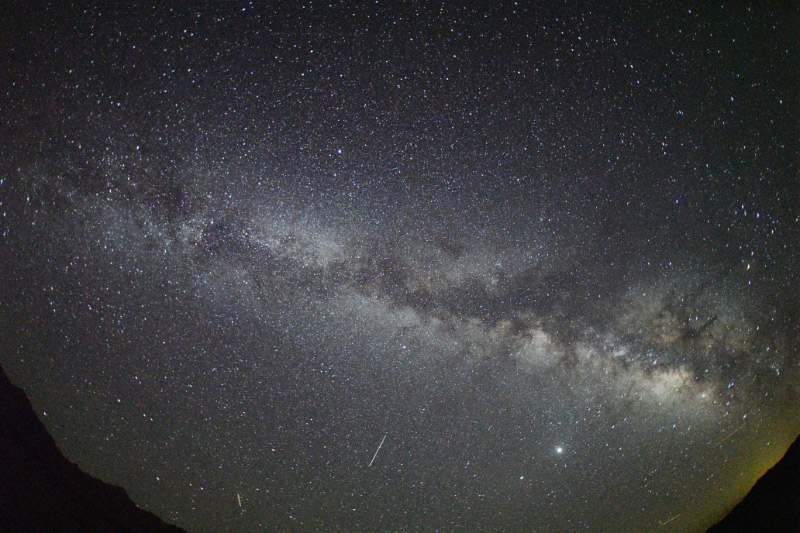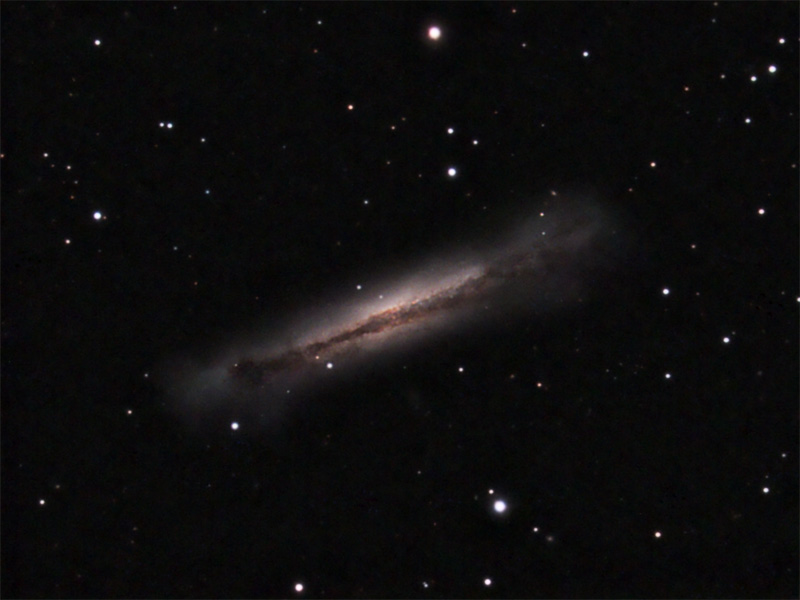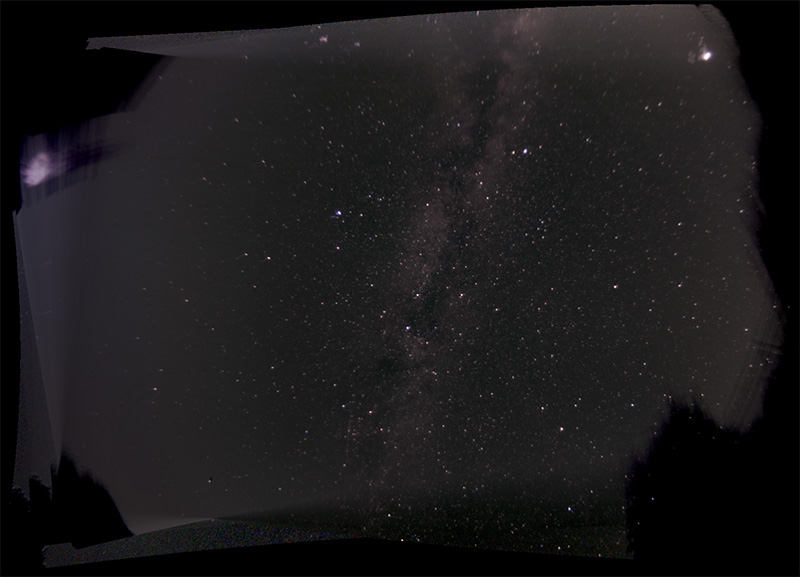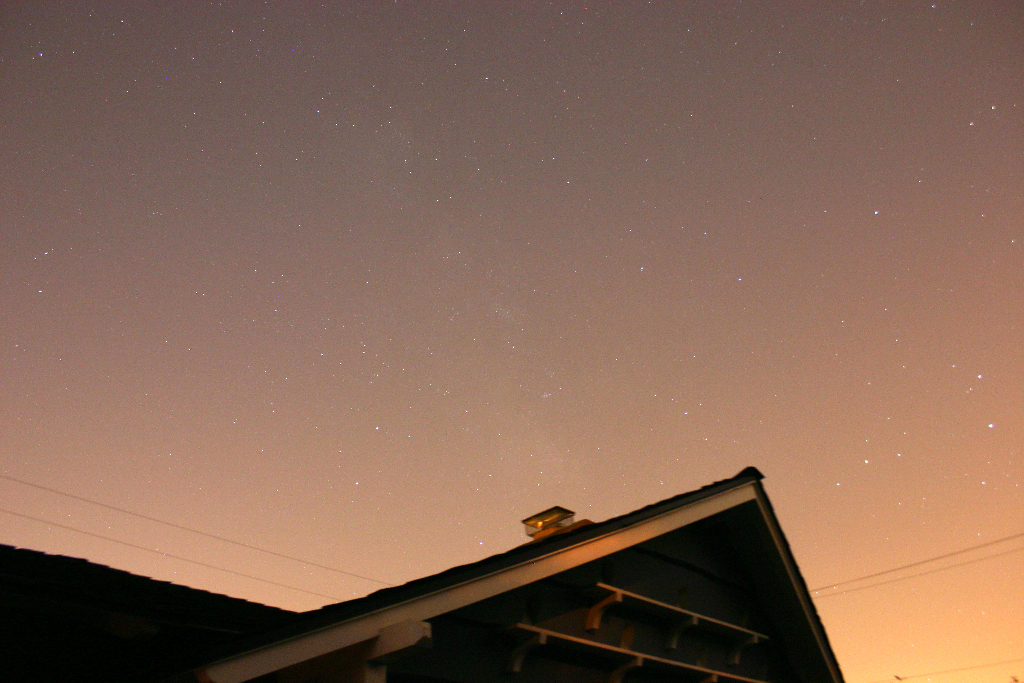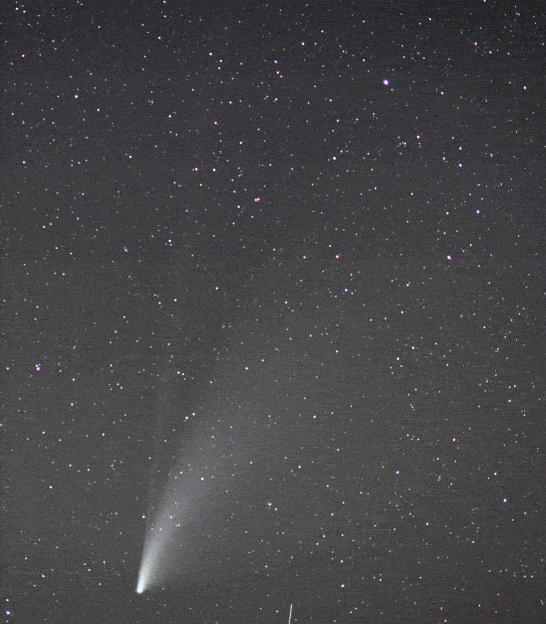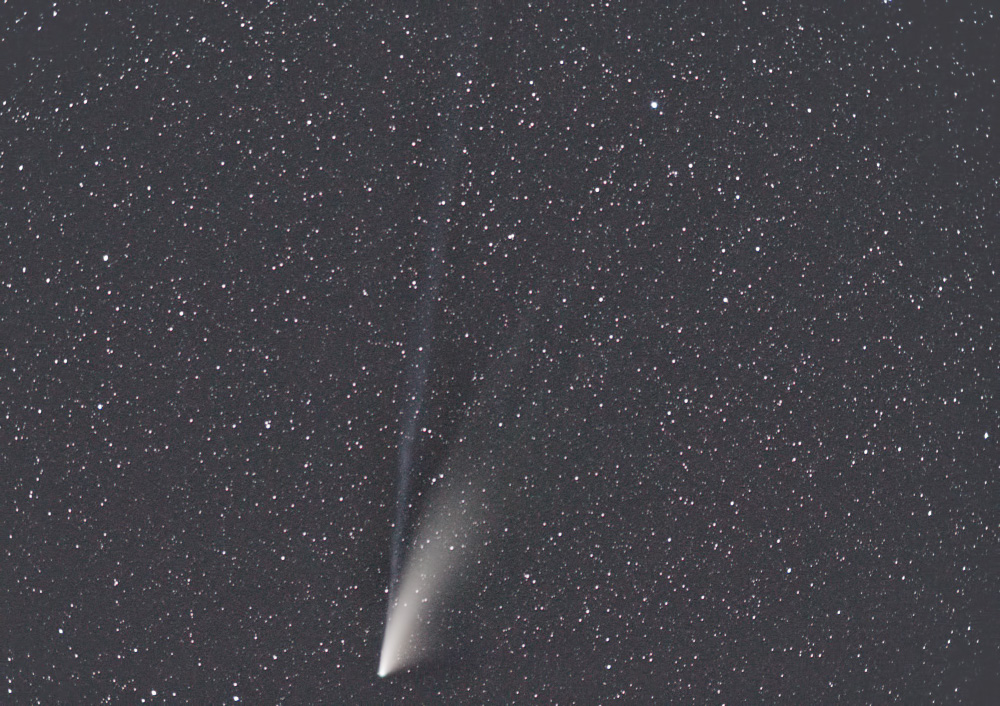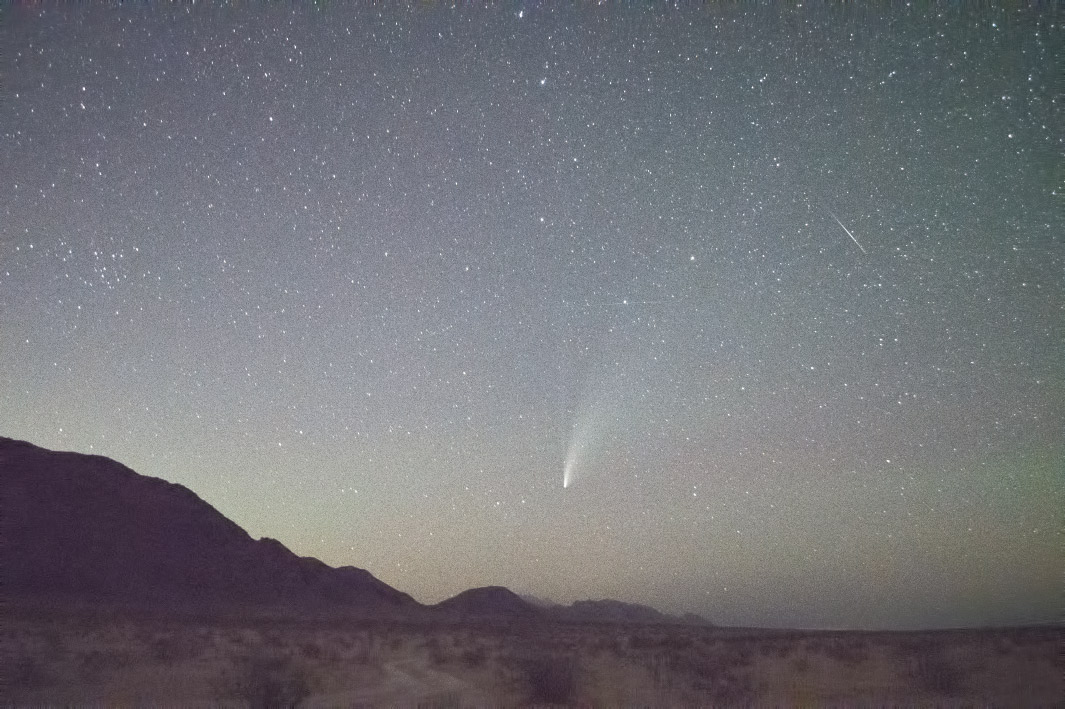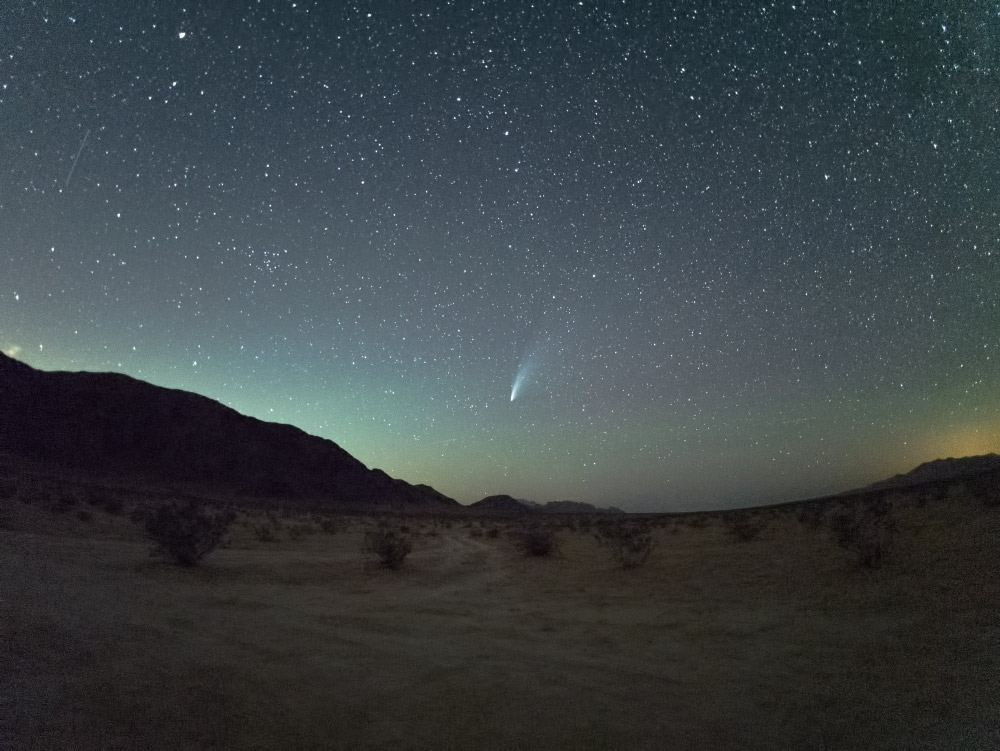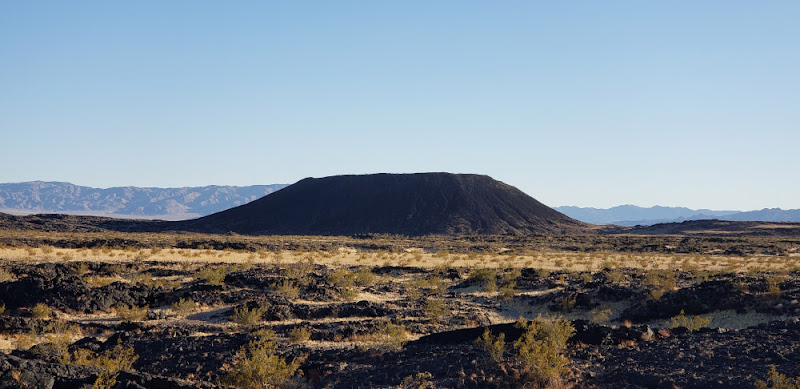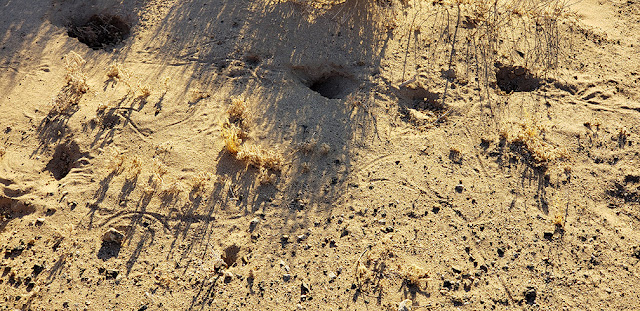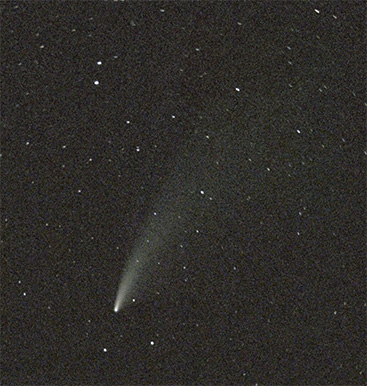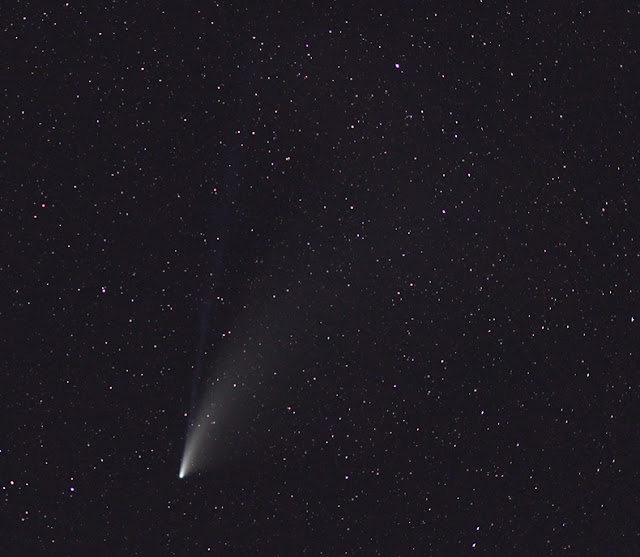Here are a my conjunction images.
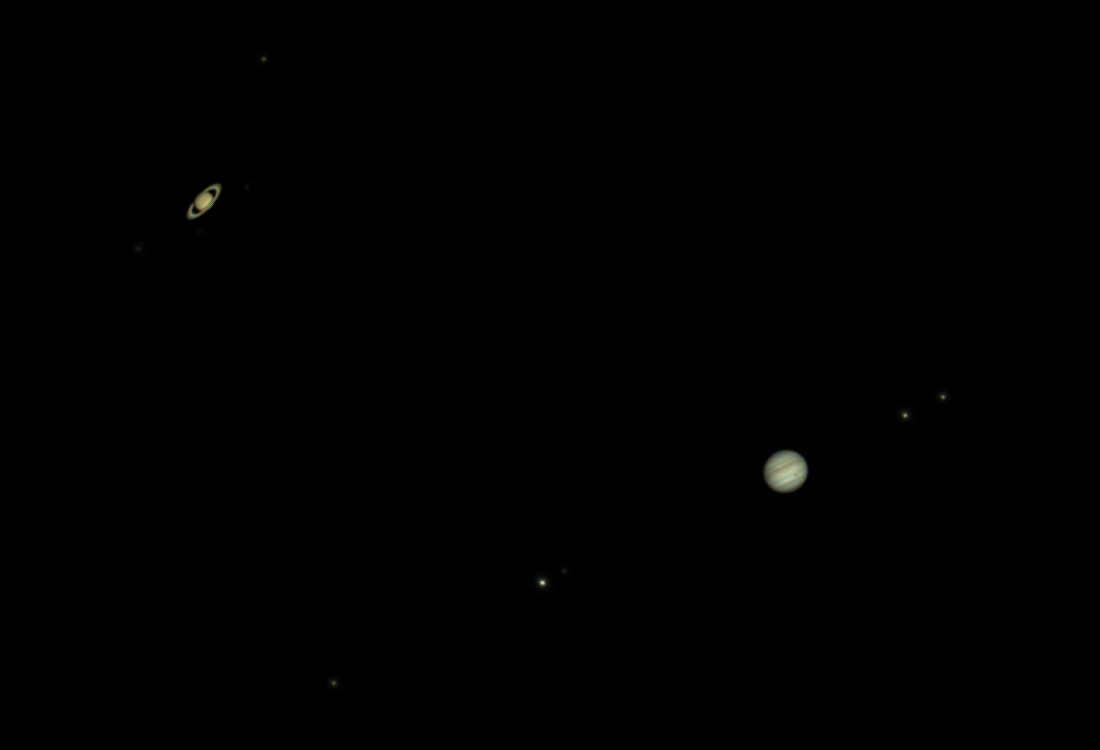 |
| 12/20/2020 note great red spot showing on Jupiter |
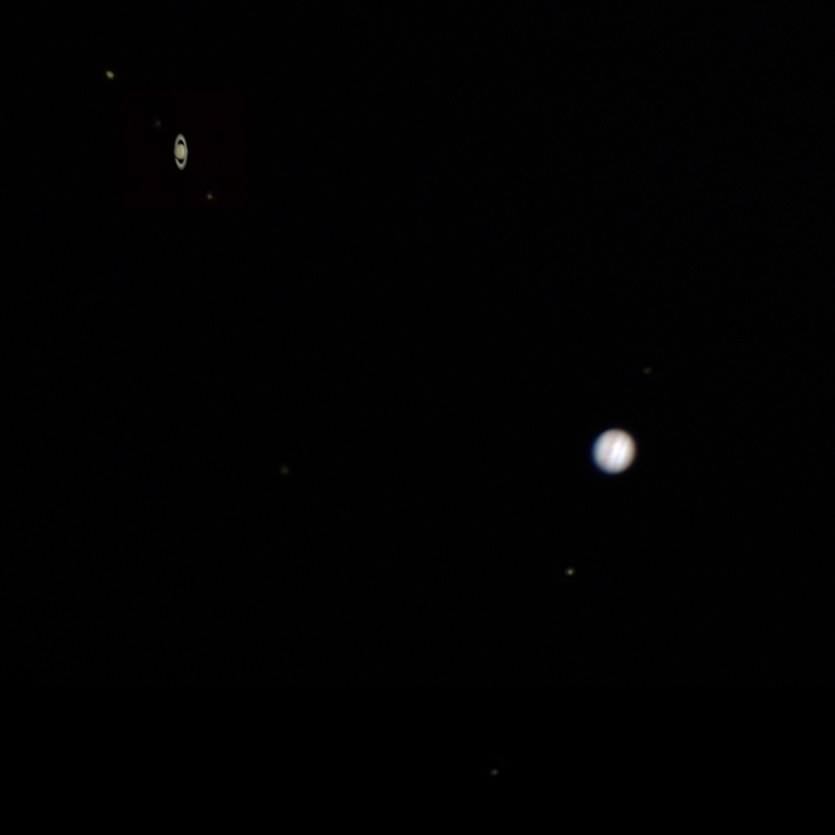 |
| Great Conjunction 12/21/2020 day of closest approach |
You'll note that Jupiter (which has four bright moons) appears to have 5 moons in the first image, but only 3 on the day of closest approach!? In the first, a background star is in disguise as a moon, while in the second, Ganymede is attempting to hide from view as it crosses the surface of the planet (see annotated versions below).
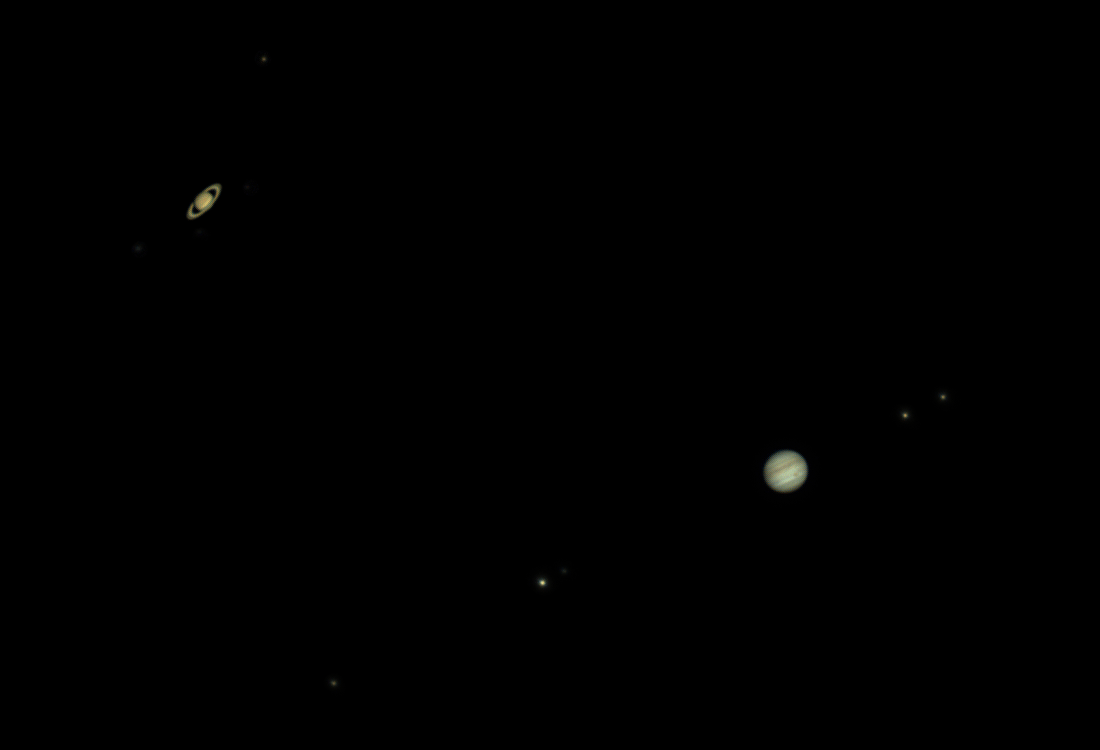 |
| 12/20/2020 |
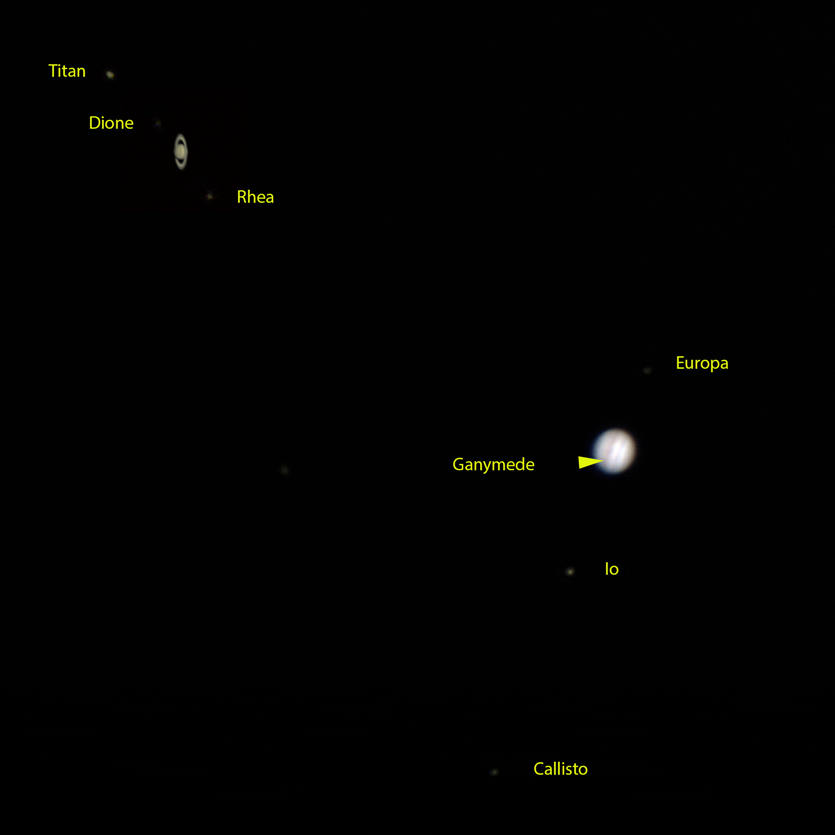 |
| 12/21/2020 |
The event was heralded by a fireball (bright meteor) seen by thousands. It ocurred at 5:11 PM pacific, less than 30 minutes after sunset with the southern sky still bright blue, making this the brightest I've ever seen. It looked like a firework with sparkles. Scott Young from our astronomy club put it better: "I was looking directly at the planets and the fire ball came from the north and traveled south. It burned up just after falling below the planets. Long streak with lots of fragments and a burst just before the burnout. I'm sure it was an Ursid". About 10 minutes after seeing it, I made a quick sketch as it was hard for me to describe the direction:
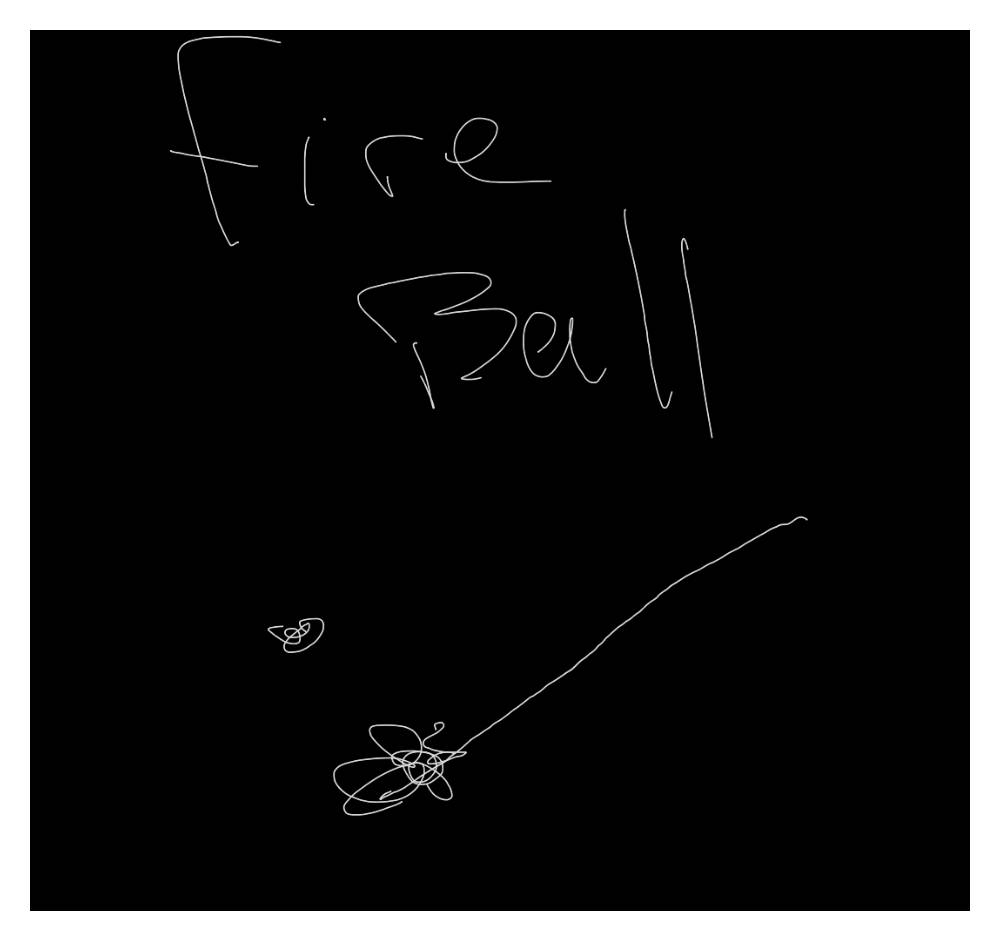 |
| you can see why i take pictures :) |
There were documented sightings from Santa Barbara to San Diego:
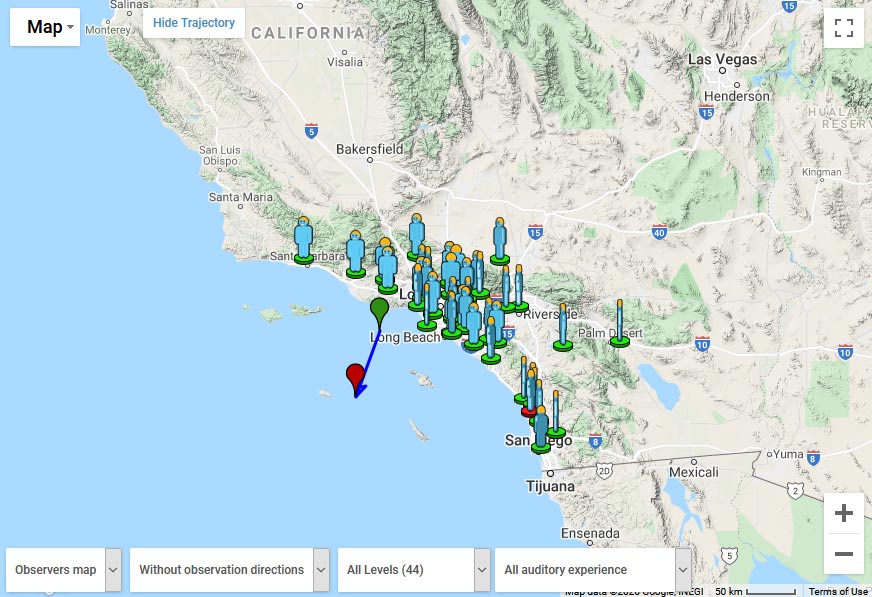 |
| very tall astronomers |
It has been labled as event 7964-2020 by the American Meteor Society. More info at links below:
American Meteor Society log of event 7964-2020 -includes video
december meteor forcast
ursid meteor shower
Image Details:
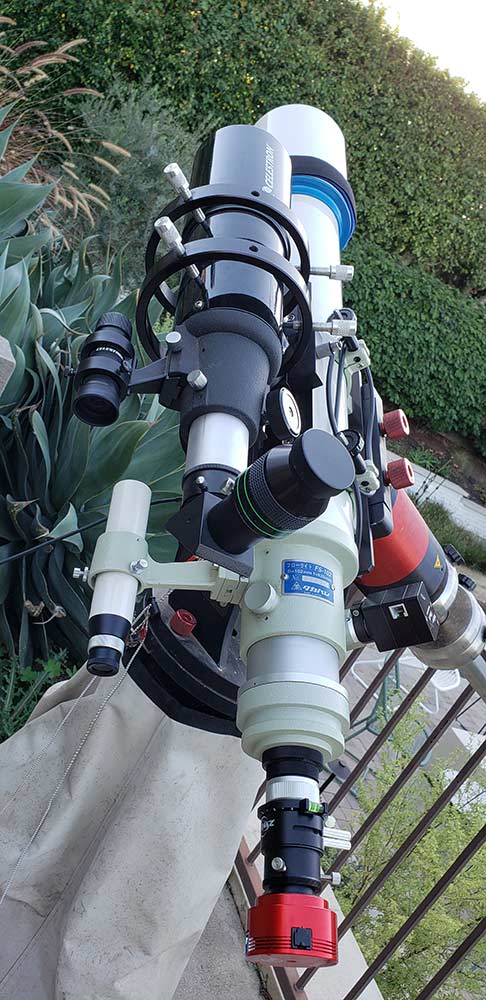 |
| Imaging rig including telescope for telescope for telescope. hedge obstructs low southern horizon :( |
The conjunction images are composites of multiple exposures: short tight crops at high frame rates for each planet. a combined image of the two planets with saturn much more faint relative to jupiter than in the composite. a longer exposure for the jovian moons, still longer for titan, and longest with a stretch for the faint moons of saturn.
Takahashi FS 102 at 820 mm, ZWO ADC, Baader IR/UV block filter, ZWO ASI 290 MC
captures ranged from 0.34 ms exposures at 400 fps to 100 ms at 8 fps
Eastbluff, CA 12/20/20 and 12/21/20
